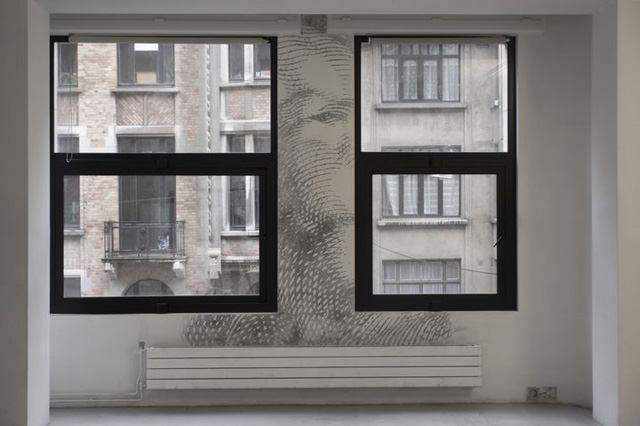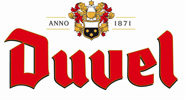
Boris Thiébaut
With Hendrick Goltzius
(la chute de Tantale)
Exhibition dates 15.01 — 22.01.2012 From 5 to 8PM
Opening 14.04.2011 — 8PM
rue de L'autonomie 9 | 1070 Brussels
NL
Hendrick Goltzius, Duits maniërist emigreerde naar Nederland, was graveur. Boris Thiébaut (België, 1981) stelt in detail het transcript voor in een oversized off-screen, door de lijnen uit te rekken over de muren heen en deze uitbreiden buiten de grenzen van de oppervlakte, duwen het frame, in een huishoudelijke context.
EN
Hendrick Goltzius, German Mannerist, emigré to the Netherlands between the 16th and 17th centuries, was an engraver. Boris Thiébaut (Belgium, 1981) captures details of his etchings in an oversized transcription that suggests an off-camera world, stretching the walls and spreading beyond the limits of the drawn surface, pushing back the frame, all in a domestic context.
FR
Hendrick Goltzius, maniériste allemand émigré aux Pays-Bas des XVIe-XVIIe siècles, était graveur. Boris Thiébaut (Belgique, 1981) capte un détail de ses gravures dont la retranscription surdimensionnée laisse imaginer un hors-champ étirant les murs et s'étalant au-delà des limites de la surface dessinée, repoussant le cadre, dans un contexte domestique.
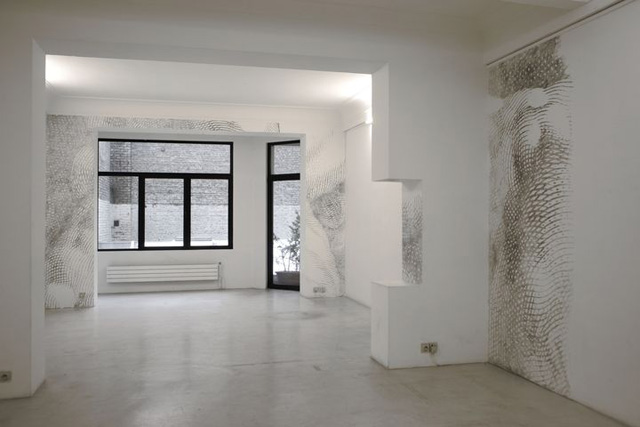
FR
With Hendrick Goltzius (La Chute de Tantale)
Renvoyant à l’histoire de l’art et plus particulièrement aux gravures anciennes, Boris Thiébaut (Belgique, 1981) saisit les images dans leurs détails : de gros plans anatomiques, un mouvement ou une matière, simplement suggérés, sont re-dessinés à l’échelle d’un lieu.
Les morceaux de corps, charnus, comme en apesanteur sur les murs d’exposition, créent un paysage hallucinatoire en hommage à Hendrick Goltzius. Méconnu du grand public, celui-ci se prête pour la seconde reprise aux choix iconographiques de Boris Thiébaut après une première version au MUba à Tourcoing en 2009. Pour cette réalisation à L’autonomie 9, l’artiste poursuit sa recherche graphique et remanie l’oeuvre originale en l’adaptant à l’architecture qui lui est proposée.
Hendrick Goltzius (1558-1616), maniériste allemand émigré aux Pays-Bas, était graveur. Formé à Duisburg en Allemagne, il fonda, en 1585, l’Académie de dessin d’Haarlem avec Karel Van Mander. Ses sujets de prédilection étaient issus de la mythologie. On lui connaît aussi de nombreux portraits et autoportraits.
Les poses volontairement contorsionnées et disgracieuses de ses personnages, leur anatomie disproportionnée, leurs muscles saillants et souvent imaginaires poussent le maniérisme dans ses extrêmes.
Boris Thiébaut en capte un détail dont la retranscription surdimensionnée laisse imaginer un hors-champ étirant les murs et s’étalant au-delà des limites de la surface dessinée, repoussant le cadre, dans un contexte monumental. Les images surgissent : des instantanés captés d’un autre temps, des chairs qui manquent de délicatesse et des débordements de style. Les visions fiévreuses des effusions décoratives maniéristes sont assimilées à une filiation des wall drawings.
La fusion du dessin dans l’architecture révèle à la fois le sujet, le médium et son support. Le morcellement d’une exagération anatomique interroge les rapports d’échelle de la représentation humaine dans son environnement, dans ce cas précis, domestique.
La présence fantomatique de la gravure dans l’espace habité mêle différentes temporalités : celles du sujet représenté (le supplice de Tantale), de l’oeuvre originale (par Hendrick Goltzius) et de l’exposition (l’oeuvre, l’artiste et le lieu). Dans le regard de l’artiste, la Renaissance, elle-même sous l’influence de la mythologie, constitue une mise en abîme subtile, un procédé troublant la construction narrative, celle de La Chute de Tantale.
L’intérêt que peuvent porter les artistes pour l’histoire de l’art aujourd’hui oscille entre la fascination, la sublimation et la question de la légitimation artistique à travers les oeuvres du passé. En un sens, la pratique de Boris Thiébaut est nourrie des mêmes motivations qu’Hendrick Goltzius eu lorsqu’il reproduisit les oeuvres de Bartholomeus Spranger, maître maniériste de la cour de Rodolphe II à Prague, connu essentiellement grâce aux gravures du premier. Les peintures, ainsi réinterprétées, ont été un moyen de les transmettre différemment en leur donnant une dimension inédite.
La création contemporaine n’a pas toujours été en conflit avec son passé.With Hendrick Goltzius (la chute de Tantale) réconcilie à nouveau les amours contrariés de l’art et de son histoire.
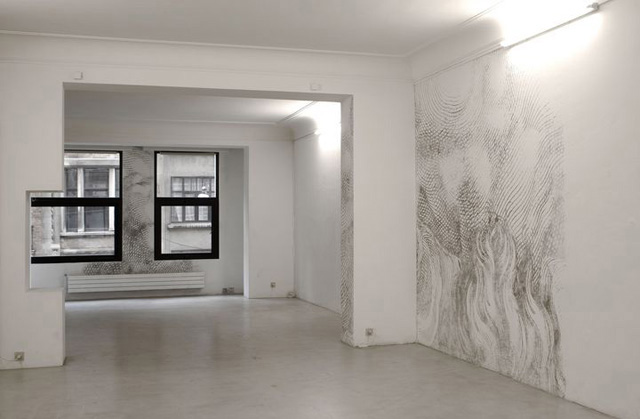
EN
With Hendrick Goltzius (The Fall of Tantalus)
Referring to the history of art and in particular to old engravings, Boris Thiébaut (Belgium, 1981) captures images through their details: anatomical close-ups, a movement, a texture, simply suggested, are re-drawn to the scale of another space.
Body parts, flesh, seemingly floating on the exhibition walls, create a hallucinatory landscape in homage to Hendrick Goltzius. Little known to the general public, the artist is Boris Thiébaut’s iconographic choice for the second time after the MUba version in Tourcoing in 2009. For the L’autonomie 9 project, Thiébaut continues his graphic research and redrafts the original work by adapting it to the architecture at hand. Hendrick Goltzius (1558-1616), German Mannerist, émigré to the Netherlands, was an engraver. After studying in Duisburg in Germany, he founded the Drawing Academy of Haarlem with Karel Van Mander in 1585. His favoured topics were drawn from mythology. He was also known for his numerous portraits and self-portraits.
The deliberately contorted and awkward poses of his figures, their disproportionate anatomy, their bulging and often imaginary muscles, push Mannerism to its limits.
Boris Thiébaut makes an oversized transcription of a detail, suggesting an off-camera world, stretching the walls and spreading beyond the limits of the drawn surface, pushing back the frame, in a monumental context. The pictures come to life : snapshots from another time, bodies that lack delicacy, and an overflow of style. Feverish visions of decorative effusions in the Mannerist style are treated as an affilitation of wall drawings.
The blending of drawing into architecture reveals the subject, the medium and the support. The fragmentation of an anatomical exaggeration questions the relations of scale when representing the human body in its environment, a domestic one in this case.
The shadowy presence of the etching in a living space mixes different time frames : the represented subject (the Torment of Tantalus), the original work (by Hendrick Goltzius) and the exhibition (the work, the artist, the space). In the artist’s mind, the Renaissance, which is in itself influenced by mythology, constitutes a subtle mise en abîme, a process that blurs the narrative of the Fall of Tantalus.
Nowadays, artists’ interest in the history of art sways between fascination, sublimation and the question of artistic legitimization through works from the past. Boris Thiébaut’s art is, in a way, nourished by the same motivations as Hendrick Goltzius when he reproduced the work of Bartholomeus Spranger, a Mannerist master of Rudolf II’s court in Prague, famous, mainly, because of Goltzius’ etchings. The paintings, thus reinterpreted, have served as a way of passing them on whilst giving them a whole new dimension.
Contemporary creation has not always conflicted with its past. With Hendrick Goltzius (The Fall of Tantalus) reconciles once again the thwarted love stories of art and its history.
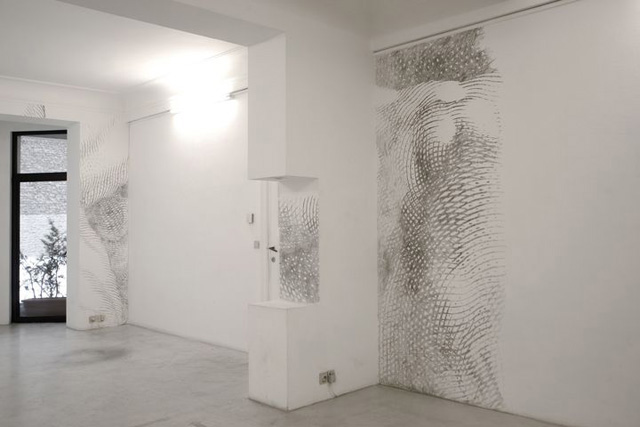
NL
Met Hendrick Goltzius (De Val van Tantalus)
Verwijzend naar de geschiedenis van kunst en meer in het bijzonder naar oude prenten, legt Boris Thiébaut (België, 1981) de details van de beelden bloot: close-ups van het anatomische, de bewegingen en de materie, worden opnieuw voorgesteld en ontworpen op schaal van een specifieke plaats.
De – vlezige - lichaamsdelen, worden gewichtloos blootgesteld op de muren, creëeren een hallucinant landschap ter ere van Hendrick Goltzius. Na een eerste versie te Muba in Tourcoing (2009) wordt dit een tweede serie iconografische werken van de kunstenaar. Voor deze realisatie te Autonomie 9, vervolgt de kunstenaar zijn onderzoek en herziet het oorspronkelijke werk door aanpassing van de architectuur.
Hendrick Goltzius (1558-1616), Duits maniërist emigreerde naar Nederland, was graveur. Opgeleid in Duisburg (D), richtte hij in 1585, de Academie van Haarlem op met Karel van Mander. Zijn favoriete onderwerpen waren getrokken uit de mythologie. Hij is tevens bekend door zijn veel (zelf)portretten.
De poses zijn met opzet verwrongen en tonen het lelijke van zijn personages, hun onevenredige anatomie, hun kabbelende spieren en het vaak denkbeeldig groeien in de uitersten van het maniërisme.
Boris Thiébaut stelt in detail het transcript voor in een oversized off-screen, door de lijnen uit te rekken over de muren heen en deze uitbreiden buiten de grenzen van de oppervlakte, duwen het frame, in een monumentaal. De beelden ontstaan als snapshots dewelke gevangen zitten in een andere tijd, een gebrek aan gevoeligheid en excessen van de stijl. De koortsachtige visioenen van maniëristische decoraties worden behandeld als een aansluiting van de muurtekeningen.
De fusie van design in de architectuur verheft zowel het onderwerp, het medium en haar steun. De fragmentatie van een anatomisch overdrijving verslagen het menselijke figuur in zijn omgeving, in dit geval, de binnenlandse.
De spookachtige aanwezigheid van de gravure in de leefruimte combineert verschillende tijdschalen: die van het afgebeelde onderwerp (het verleidelijke), het oorspronkelijke werk (van Hendrick Goltzius) en de tentoonstelling (het kunstwerk, de kunstenaar en de plaats). De kijk van de kunstenaar is de Renaissance – onder de invloed van de mythologie – een oproep voor de subtiele afgrond, een verontrustende vertelling en bouwproces, dat de Val van Tantalus.
De interesse van de kunstenaars in de geschiedenis van de hedendaagse kunst worden gedragen door fascinatie, sublimatie en de kwestie van artistieke legitimiteit door de werken uit het verleden. In zekere zin is het werk van Boris Thiébaut gevoed door dezelfde motivatie als bij Hendrick Goltzius toen deze het werk van Bartholomeus Spranger, maniëristische meester van het hof van Rudolf II in Praag, reproduceerde. Herinterpreteerde – schilderijen waren een manier om deze anders te bekijken door een nieuwe dimensie.
Hedendaagse kunst is niet steeds in conflict geweest met haar verleden. Met Hendrick Goltzius (De Val van Tantalus) verzoent gedwarsboomde liefde voor kunst en haar geschiedenis zich weer.
